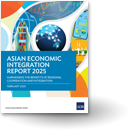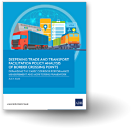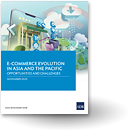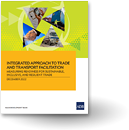Your Questions Answered: What Will be the Impact of the New US Remittance Tax?
Economists Ed Kieran Reyes and Jules Hugot, with ADB’s Economic Research and Development Impact Department, answer questions about the new US remittance tax.
The United States’ One Big Beautiful Bill Act adds a 1% tax on most money transfers sent from the US to other countries. The US is the single largest source of remittances to Asia and the Pacific, but the low rate of the tax and the many ways to avoid it will considerably limit its impact, according to research for the July 2025 Asian Development Outlook.
What is the new 1% US remittance tax and who must pay it?
Beginning 1 January 2026, the US will charge a 1% tax on money transfers sent via remittance service providers and mobile apps, while transfers routed through US banks or US-issued debit and credit cards remain exempt.
The levy will shift part of the tax burden to immigrants. Collection responsibility falls on the companies that process remittances and money-transfer apps, so the fee is added before funds reach recipients abroad. Traditional bank wires and payments by cards issued by US banks escape the charge, creating built-in channels to avoid the tax.
How important are US remittances for countries such as India, the Philippines, and Pacific Island economies?
The US remains the region’s largest single remittance source, channeling billions of dollars that fund household spending, education, and small businesses.
In 2021, US remittances to Asia and the Pacific totaled $61 billion, about 30% of all remittances received, with India ($16 billion), and the Philippines and the People’s Republic of China ($13 billion each) receiving the most.
Although headline figures favor large populations, the relative weight is greatest in small Pacific economies: in 2021, US remittances equaled 6.6% of GDP in Samoa, 11.7% in the Marshall Islands, and up to 16.5% in Tonga, underscoring how even minor changes in flows can ripple through these nations’ external accounts.
How much could Asian and Pacific economies lose because of the new tax?
Estimates suggest the tax would cut remittance inflows by at most 0.31% of GDP in Tonga and just 0.01% of GDP, about $315 million, in India, with even smaller hits elsewhere in the region.
The Marshall Islands could see a 0.22% loss in remittances, Samoa 0.10%, and Fiji 0.03%. Among larger economies, the Philippines would forgo 0.05% of GDP at most and Viet Nam and Nepal about 0.03%, indicating that, outside a handful of Pacific islands, the tax alone is unlikely to shake macroeconomic stability.
Can migrants avoid the 1% tax and soften its impact back home?
Yes, senders can avoid the levy by switching to exempt US bank wires or U.S-issued cards, sending physical cash, or using informal networks.
Because the law exempts transfers via banking system, many migrants may simply reroute funds through US financial institutions or credit cards, bypassing the fee entirely. Given this, money transfer service providers are likely to absorb part or all of the tax to remain competitive against tax-exempt alternative channels.
The tax may also increase cash hand-carrying or reliance on trusted brokers who settle remittances off-books.
What can governments in Asia and the Pacific do to respond to these challenges?
Governments in the region can mitigate the impact of the US remittance tax by promoting the use of tax-exempt channels such as bank wires. This might be an opportunity to improve cross-border banking and boost access to formal banking.
Governments can also leverage multilateral forums to voice the concerns of vulnerable economies depending on US remittances.
Although the new 1% US remittance tax raised concern, estimates show its direct hit on Asia and the Pacific will be very modest, measured in a few tenths of a percent of GDP even in the most dependent Pacific economies. Because legal workarounds already exist, the region’s remittance lifeline is likely to stay resilient.
Original article was published at the Asian Development Blog and duplicated here with permission from the authors. *




